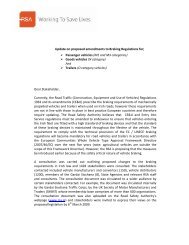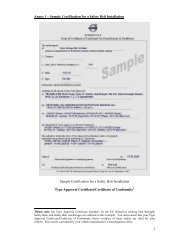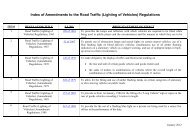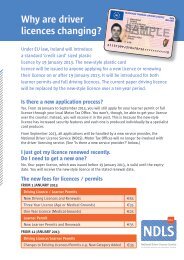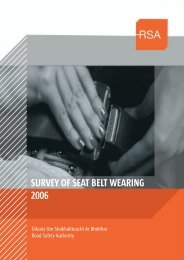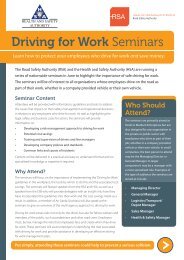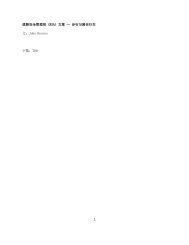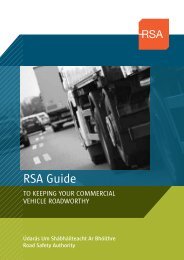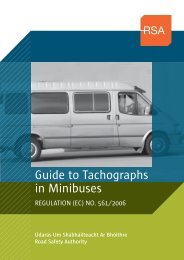NCT Manual. - National Car Testing Service
NCT Manual. - National Car Testing Service
NCT Manual. - National Car Testing Service
You also want an ePaper? Increase the reach of your titles
YUMPU automatically turns print PDFs into web optimized ePapers that Google loves.
NATIONAL CAR TEST (<strong>NCT</strong>) MANUAL 2012<br />
REAR SUSPENSION<br />
55<br />
Method of <strong>Testing</strong><br />
1. With the vehicle on the lift or pit, raise the rear of the vehicle so that the suspension hangs freely using the vehicle<br />
manufacturer’s recommended jacking points for checking rear suspension.<br />
2. Examine axle beams, trailing arms, swinging arms, and their mounting bushes/bearings/shafts/ball joints for wear damage<br />
and distortion.<br />
3. Check for damage or excessive corrosion of any suspension strut mounting, wear in the shaft and the condition of the bonding<br />
between the metal and flexible material in the strut support bearing.<br />
4. For all suspension types examine the condition of wishbones, ball joints, track control arms, anti-roll bars, transverse rods,<br />
radius rods and their mounting bushes, bearings, shafts, washers or retaining devices.<br />
5. Examine the condition of the chassis frame and body shell structure in the vicinity of suspension mounting points and<br />
suspension subframe mounting points for fractures, excessive corrosion and distortion.<br />
ITEM<br />
Axle Beam, Trailing Arm,<br />
Wishbones, Swinging Arm, Track<br />
Control Arm, Suspension Strut<br />
Anti-roll Bar,<br />
Transverse Rod, Radius Rod/Link<br />
Bushes, Ball Joints, Sliding Bushes or<br />
Swivel Joints<br />
Mounting Area<br />
Retaining or Locking Devices e.g.<br />
Split Pin, Nut, Rivet or Weld.<br />
Dust Covers<br />
REASONS FOR FAILURE<br />
1 Obviously askew.<br />
2 Mounting bushes, bearing or bearing carrier, shafts,<br />
ball joints, obviously loose, worn or insecure.<br />
3 Cracked or damaged.<br />
4 Mounting loose.<br />
5 Cracked or deformed.<br />
6 Missing or broken.<br />
7 Excessive wear.<br />
8 Insecure.<br />
9 Damaged or corroded to such an extent that the security<br />
or alignment of the suspension component is affected.<br />
10 Absent, insecure, worn or broken.<br />
11 Dust cover is missing or severely deteriorated.<br />
85



